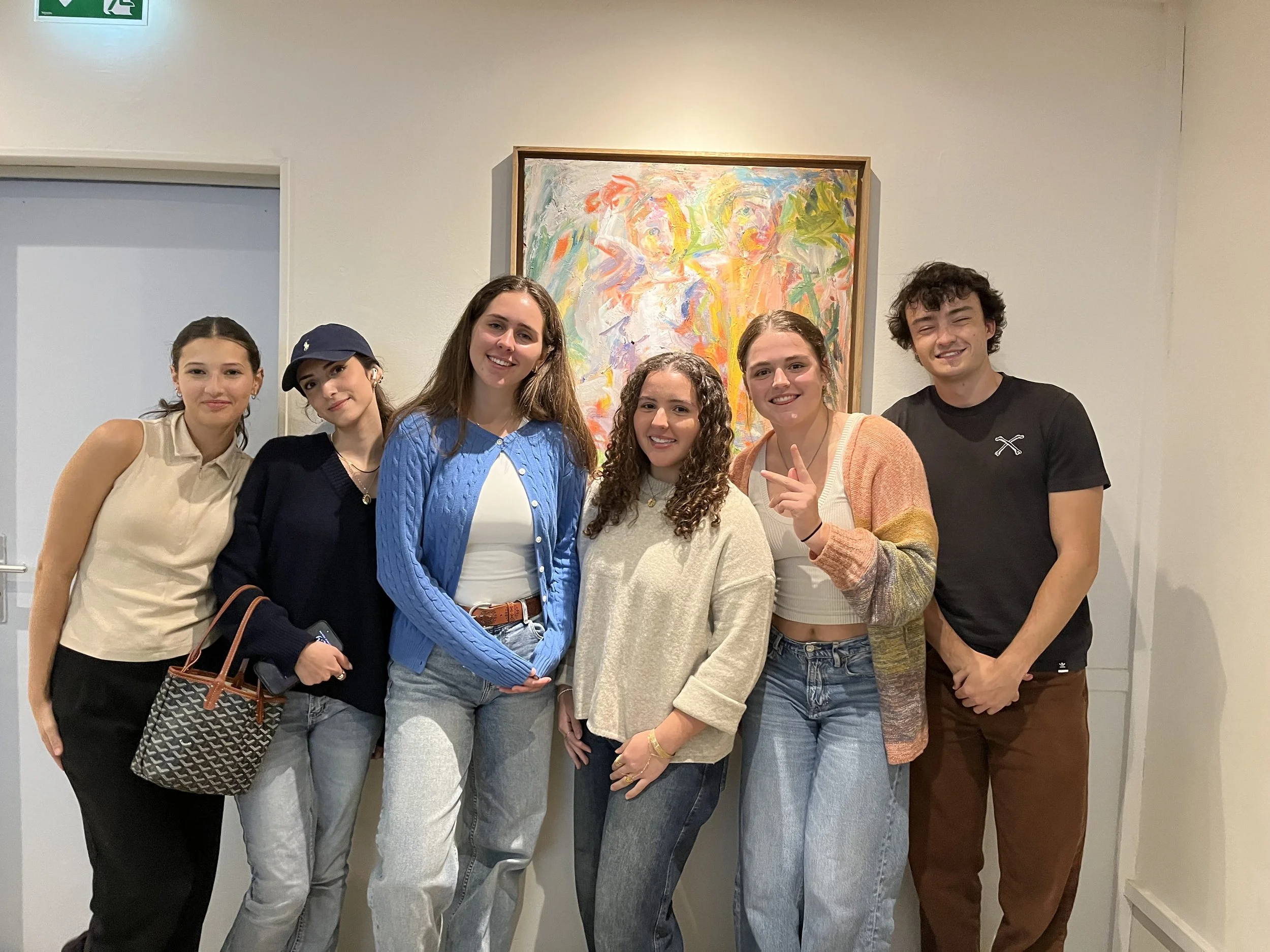Women’s Representation in Aix—Utilizing Art as a Catalyst for Change
As an ACM Undergraduate, one of the required courses is Mediterranean 101, a class that aims to give students a wealth of context about the beautiful and culturally rich place we are living and studying. Most recently, our class had the privilege of doing a field study with ACM Professor Dr. Aurore Guitry, who spoke to us about the multitude of influential Provencal women who have remained unnoticed and unacknowledged, both historically and currently. She led us through the city center, explaining the stories of women who have influenced Aix's history.
What stood out to me most about Professor Guitry’s explanations was the common theme of subtlety when representing women throughout Aix. The majority of women Professor Guitry mentioned had no statue, sculpture, or memorial honoring their influence. Out of every woman she mentioned, there was only one small plaque honoring Hélène Ardevol, a Frenchwoman who courageously hid members of the resistance in her apartment (what is now Hotel Caumont) during WWII. Even then, this plaque takes up such little space, that out of the many times I have walked by Hotel Caumont where it’s installed, I have unknowingly overlooked it.
This week, I attended the Niki de Saint Phalle exhibition, a French-American sculptor and painter known for her rebellious and symbolic body of work. The exhibit is in Hotel Caumont, here in Aix, the same building that was the previous home of Hélène Ardevol. Fittingly enough, Niki de Saint Phalle’s sculptures are depictions of the liberation and celebration of women. Through her artwork, Saint Phalle brought what she wished to see in society to the world: equality, joy, and vibrancy.
Described as “rebellious”, “complex” and “trailblazing” by critics and historians, Saint Phalle’s mission was to create art that took up space. When she began in the 1960s, society viewed women as small, meek, and passive. Saint Phalle rejected this notion through the creation of some of her most famous pieces, “Nanas”. Saint Phalle’s “Nanas” are big, colorful, exaggerated female figures that represent power, implying their freedom and autonomous joy. Independent and free standing, Saint Phalle sought to communicate the individual power of women and their innate wholeness. Saint Phalle had a consistent social message throughout her body of work, communicating her desire for an equitable society that honors the autonomy of women. As the MAMAC Museum in Nice explains, Saint Phalle’s “Nanas” were, “...unapologetic images of empowered womanhood — that testified to her belief that art could change the world”.
Connecting what I learned about women’s representation throughout Aix and the work of Niki de Saint Phalle, I have been inspired by how art, in so many forms, is a symbol of resistance throughout history. Art is a tool for communication and connection that often speaks louder than words. As I walked through the exhibition, I was inspired by Saint Phalle’s forward-thinking and uplifting depictions of liberated women. Saint Phalle spoke directly to society as a whole and gave herself and others the freedom to imagine a freer and more vibrant world.
To me, this exhibit represented a tribute to the women throughout France, and the world, that continue to go unnoticed and underacknowledged. Saint Phalle’s artwork is a celebration of women’s empowerment and is exhibited in the very same building where Hélène Ardevol heroically hid members of the resistance during such a tumultuous, uncertain time. It was a beautiful thing to witness Saint Phalle’s artwork, dedicated to the liberation of women, be honored and celebrated in Aix-en-Provence, representing societal progress and a step towards Saint Phalle’s artistic vision of equality, joy, and vibrancy.






